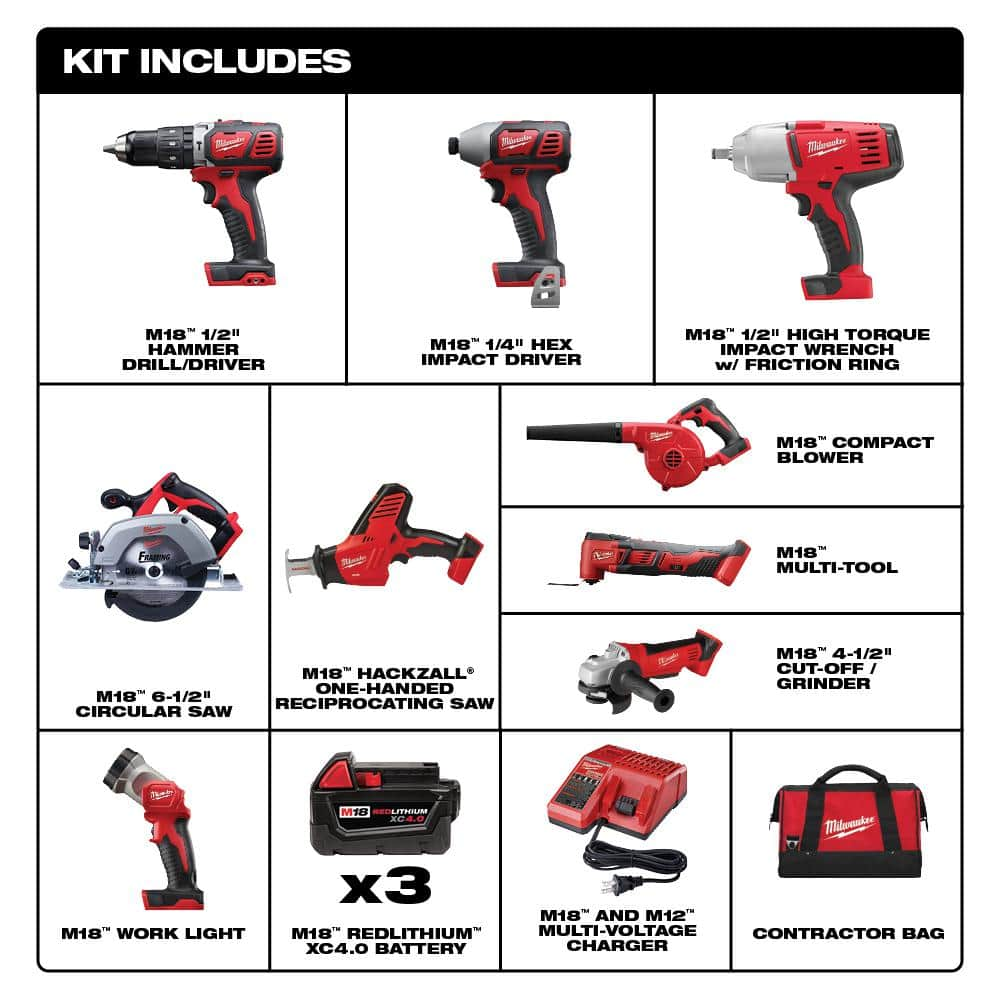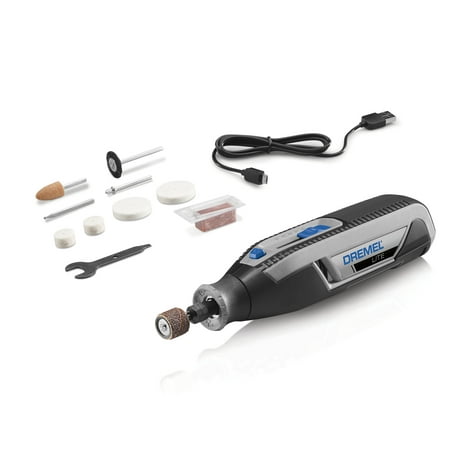Milwaukee M18 18V Lithium-Ion Cordless Combo Tool Kit (9-Tool) with (3) 4.0 Ah Batteries, Charger and Tool Bag
Includes 9 cordless tools , 3 batteries, charger and bag. M18 delivers innovative motor design and superior ergonomics. Part of the M18 system, featuring over 200+ solutions.
The Milwaukee M18 18-Volt Lithium-Ion cordless nine-tool kit has the tools you need to tackle a wide range of drilling, driving, grinding and cutting applications. Featuring patented technologies and electronics, an innovative motor design and superior ergonomics, these tools give you the power, weight and performance to tackle whatever job you throw their way. Powered by REDLITHIUM for greater torque and longer run time, this durable set is made to withstand the toughest jobsite wear and tear for years of reliable use.
- M18 compact 1/2 in. hammer drill or driver built with a Milwaukee 4-pole frameless motor: features a robust design combined with rare-earth magnets for longer life, best-in-class 500 lbs. of torque and 0-400/0-1,800 RPM
- M18 1/4 in. hex impact with the Milwaukee 4-pole frameless motor delivers 1400 in./lbs. of torque
- M18 4-1/2 in. grinder provides up to 50% more cuts on a single charge and up to 35% faster cutting speed
- M18 HACKZALL provides superior 1-handed control and versatility over a standard reciprocating saw
- M18 1/2 in. high torque impact wrench with friction ring delivers 450 ft./lbs. of torque
- M18 multi-tool delivers 11,000 to 18,000 OPM with Constant Power Technology
- M18 compact blower blows air up to 160 MPH and 100 CFM
- M18 work light provides a fold-away hook for hands free use and a 135-degree rotating head to direct light at the work area
- REDLITHIUM batteries deliver more work per charge and more work over the life of the battery
- REDLINK intelligence: provides optimized performance and overload protection using total system communication between tool, battery and charger
- Includes: contains: (1) M18 brushed hammer drill (2607-20), (1) M18 1/4 in. impact driver (2656-20), (1) M18 HACKZALL (2625-20), (1) M18 circular saw (2630-20), (1) M18 grinder (2680-20), (1) M18 1/2 in. impact wrench with friction ring (2663-20), (1) M18 multi-tool (2626-20), (1) M18 blower (0884-20), (1) M18 LED work-light (2735-20), (3) M18 REDLITHIUM 4.0 Ah batteries (48-11-1840), (1) M12-M18 multi-voltage charger (48-59-1812), (1) general purpose SAWZALL blade (50-01-1475), (1) general purpose multi-tool accessories, one 6-1/2 in. 24 TPI circular saw blade(50-40-41018), (1) belt hook, (1) contractor bag
Additional information
| Battery Power Type | Lithium Ion |
|---|---|
| Lithium Ion | Blade(s),Tool Bag |
| Motor Type | Brushed |
| Power Tool Features | Keyless Chuck, LED Light, Variable Speed |
| Returnable | 90-Day |






by Tim
Used a friend’s set and was sold on the power and quality of the tools. I also really like the diverse tools that are available under this brand versus the others.
by Deuce
Plain and simple I bought these tools almost a year ago now when they had the deal going on $500 for this set. Amazing deal. I’ve used these tools hard and through a lot of crap over the last year. I’m very well pleased with how they preform! Honestly for the price you can’t go wrong. Needless to say I own slot more Milwaukee tools and am very satisfied with the performance from every tool or accessory I buy from them. Very highly recommend
by Stuart
quieter operation than my other tools
by Ivan
Way more power than my 18 volt DeWalt